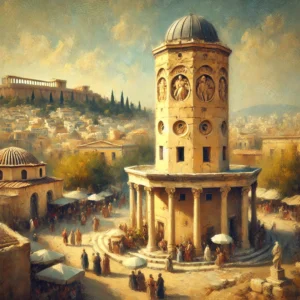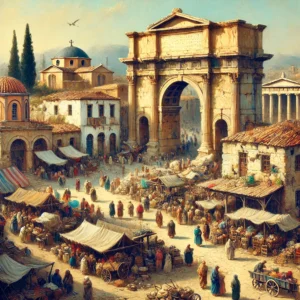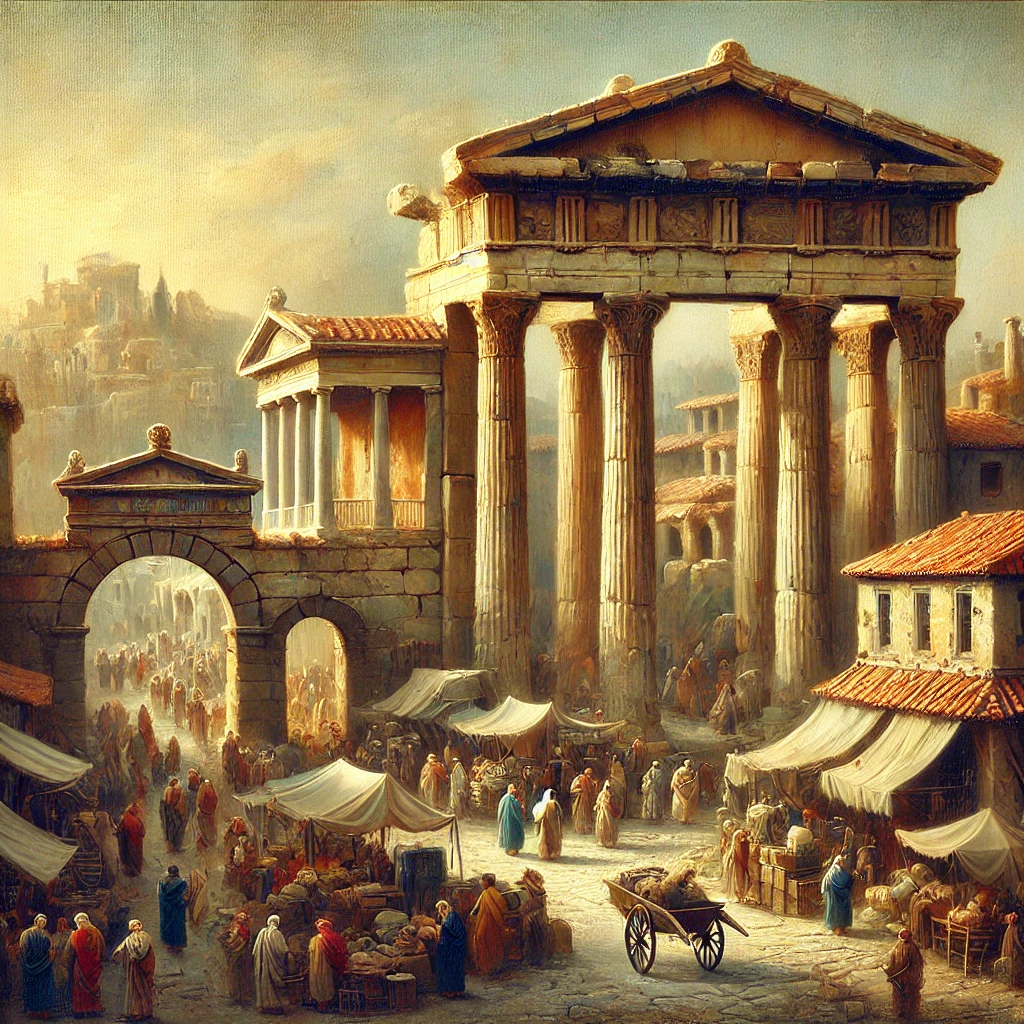While Athens is celebrated for its classical Greek heritage, the city’s Roman period left an indelible mark on its landscape, culture, and architecture. The Romans, who ruled Athens from the 1st century BCE, admired its rich history and contributed significantly to its development, leaving behind monuments and structures that are still visible today. These sites reflect a fascinating fusion of Greek and Roman styles, as well as the city’s importance within the Roman Empire.
Here are 5 historical highlights from the Roman period in Athens that every history enthusiast should explore.
- The Roman Agora
At the heart of Roman Athens lies the Roman Agora, an impressive marketplace that replaced the older, classical Agora. Constructed in the 1st century BCE with funds from Julius Caesar and Augustus, the Roman Agora served as the city’s new commercial center.
The Gate of Athena Archegetis, the monumental entrance to the agora, still stands today, marking the entry to what was once a bustling hub of trade and social interaction. Visitors can also see remnants of shops and public buildings, including the East Propylon and the Fethiye Mosque, a reminder of the area’s continued use in the Ottoman period. The Roman Agora is a vivid illustration of the changes Athens underwent under Roman rule, blending Greek traditions with Roman influence.
- The Tower of the Winds

One of the most remarkable structures from the Roman period is the Tower of the Winds, located near the Roman Agora. Built in the 1st century BCE by Andronikos of Cyrrhus, this octagonal tower functioned as a clock, weather vane, and sundial. Each side of the tower features a carved representation of one of the eight winds, giving the structure its name.
Standing at over 12 meters tall, the tower was used to measure time using both a water clock and a sundial, making it an impressive example of ancient engineering. The Tower of the Winds is not only a symbol of Roman technological innovation but also a unique blend of Roman architecture and Greek mythology, as seen in its decorative reliefs.
- The Library of Hadrian
Emperor Hadrian, known for his admiration of Greek culture, left a significant legacy in Athens, with one of his most famous contributions being the Library of Hadrian. Built in 132 CE, this massive structure was more than just a library—it was a complex that housed reading rooms, lecture halls, and gardens, serving as a cultural and intellectual center.
Today, visitors can explore the remains of this grand structure, including its monumental columned façade and portions of the inner courtyard. The library reflects Hadrian’s efforts to revive Athens as a center of learning and philosophy during the Roman period, making it an essential stop for those interested in the city’s intellectual history.
- The Odeon of Agrippa
In the center of the ancient Athenian Agora lies the Odeon of Agrippa, a large concert hall built in the 1st century BCE by Marcus Vipsanius Agrippa, a Roman statesman and close friend of Emperor Augustus. The Odeon could accommodate up to 1,000 spectators and was used for musical performances, lectures, and public gatherings.
Though much of the original structure has been lost over time, the giant statues that once adorned the entrance still stand, offering a glimpse into the grandeur of Roman Athens. The Odeon was a place where Roman and Greek cultures merged, providing entertainment and intellectual engagement for the people of Athens.
- Hadrian’s Arch

One of the most iconic landmarks from the Roman period in Athens is Hadrian’s Arch, which was erected in 131 CE to honor the Roman emperor Hadrian. The arch stands at the entrance to the Temple of Olympian Zeus, symbolically marking the boundary between the old city of Theseus and the new city that Hadrian helped expand and embellish.
The inscriptions on the arch are particularly significant: one side reads, “This is Athens, the ancient city of Theseus,” while the other says, “This is the city of Hadrian, not of Theseus.” This dual inscription reflects Hadrian’s efforts to link himself with Athens’ illustrious past while also emphasizing his role in the city’s transformation. Hadrian’s Arch remains a prominent symbol of the Roman presence in Athens, bridging the gap between Greece’s classical heritage and its Roman future.
Exploring Roman Athens Today

These five sites offer just a glimpse into the lasting impact of the Roman period in Athens. As you explore these monuments, you’ll notice the subtle blend of Greek and Roman elements that defined this era, from the architectural designs to the inscriptions that pay homage to both cultures.
To make the most of your journey through Athens’ Roman past, consider using our digital city tour map, which includes detailed information, audio guides, and walking routes to help you explore these historical highlights and more. Whether you’re walking through the Roman Agora or standing beneath Hadrian’s Arch, these landmarks offer a unique perspective on how Athens evolved during the Roman Empire.






